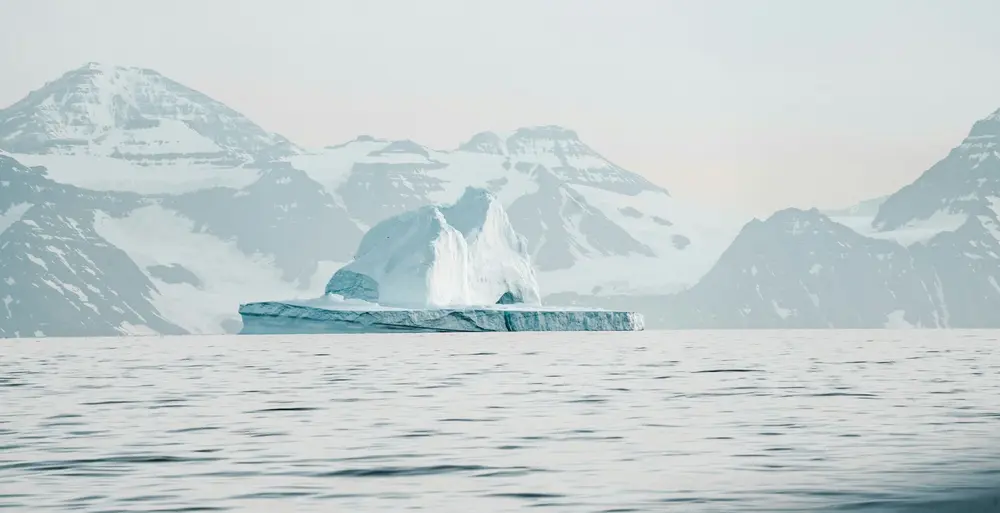Recent research on the Thwaites Glacier, known as the “Doomsday Glacier,” has fueled debate about potential solutions to mitigating the effects of climate change, including controversial geoengineering approaches. The stability of the glacier is very important because its collapse could lead to catastrophic sea level rise, endangering millions of people.
The melting of the ‘Doomsday glacier’ has accelerated
A major study published in May by researchers from the University of California, Irvine, and the University of Waterloo highlighted how warming tidal currents are accelerating Thwaites’ melting faster than many models predicted.
Located offshore of the West Antarctic Ice Sheet (WAIS), Thwaites Glacier serves as a critical barrier. Glacier melt caused by climate change currently contributes to 4% of global sea level rise and is losing approximately 50 billion tonnes of ice annually.
The WAIS itself, a massive ice sheet below sea level, could raise sea levels by nearly 10 feet if it collapsed. This will have dire consequences for major coastal cities and vulnerable island nations. A potential Thwaites breach is a tipping point, a situation where exceeding a critical climate threshold leads to rapid, potentially irreversible changes.
Stability of the “Doomsday Glacier”
Amid these worrying findings, a recent study by Dartmouth College and the University of Edinburgh offered a glimmer of hope. This study suggests that Thwaites may be less prone to a process known as sea ice instability (MICI) than previously thought.
MICI theory suggests that retreating high ice cliffs are inherently unstable and may collapse, leading to accelerated glacier loss. But researchers found that thin ice can actually slow the calving process and potentially stabilize ice cliffs. This finding highlights the need for improved models to improve predictions of WAIS behavior.
A solution to slow the retreat of glaciers
The potential risks associated with Thwaites’ rapid melting have led scientists to consider geoengineering as a possible intervention. Geoengineering involves modifying the environment through technological and structural means to slow or stop the retreat of glaciers, even in the face of rising global temperatures.
A report from the University of Chicago Climate Systems Engineering Initiative published in July called for more research on glacial geoengineering in response to the serious threats posed by rapidly retreating glaciers. John Moore, a professor at the Arctic Center and a co-author of the report, highlighted the challenges facing such approaches: “It will take 15 to 30 years before we understand enough to recommend or rule out any approach. [геоінженерні льодовики] to intervene”.
Radical geoengineering proposals
Proposed geoengineering strategies include large-scale interventions such as the construction of underwater curtains to block warm tidal currents from reaching glacier ice. These curtains can be made from strong fabrics or created with a network of tubes that release air bubbles to act as a barrier.
Gernot Wagner, a climate economist at the Columbia Climate School, emphasized the potential of such interventions if done right.
“For some polar tipping points, such as Arctic sea ice and WAIS, glacial geoengineering seems to be the only way to more or less guarantee that we can address these tipping points,” he said.
Concerns about geoengineering solutions
Despite its potential benefits, geoengineering faces criticism from glaciologists and climate experts who question its feasibility and warn that it could distract from important efforts to reduce emissions.
The fear is that reliance on geoengineering will encourage complacency, overshadowing the urgent need to reduce carbon emissions. Wagner also expressed mixed feelings, admitting that while the idea of using underwater curtains may seem “crazy” at first, it could also be a wake-up call.
“You can use that as pressure to say, ‘Wait, if serious people are talking.’ [використання штор] “As a solution, perhaps we should take this more seriously and significantly reduce emissions.”
There is an urgent need to reduce emissions
As Wagner succinctly puts it, geoengineering is not a panacea. “When we talk about glacial geoengineering we must tell the truth; it is not a solution to climate change; it is a painkiller at best.” While this approach could potentially buy time to prevent the most serious consequences, it must be combined with aggressive measures to reduce global emissions.
As research continues and new research emerges, the fate of Thwaites Glacier serves as a reminder of the delicate balance needed to address climate challenges. While innovative solutions may offer temporary relief, the focus should be on long-term strategies that increase resilience and prevent climate-critical tipping points.
Source: Port Altele
